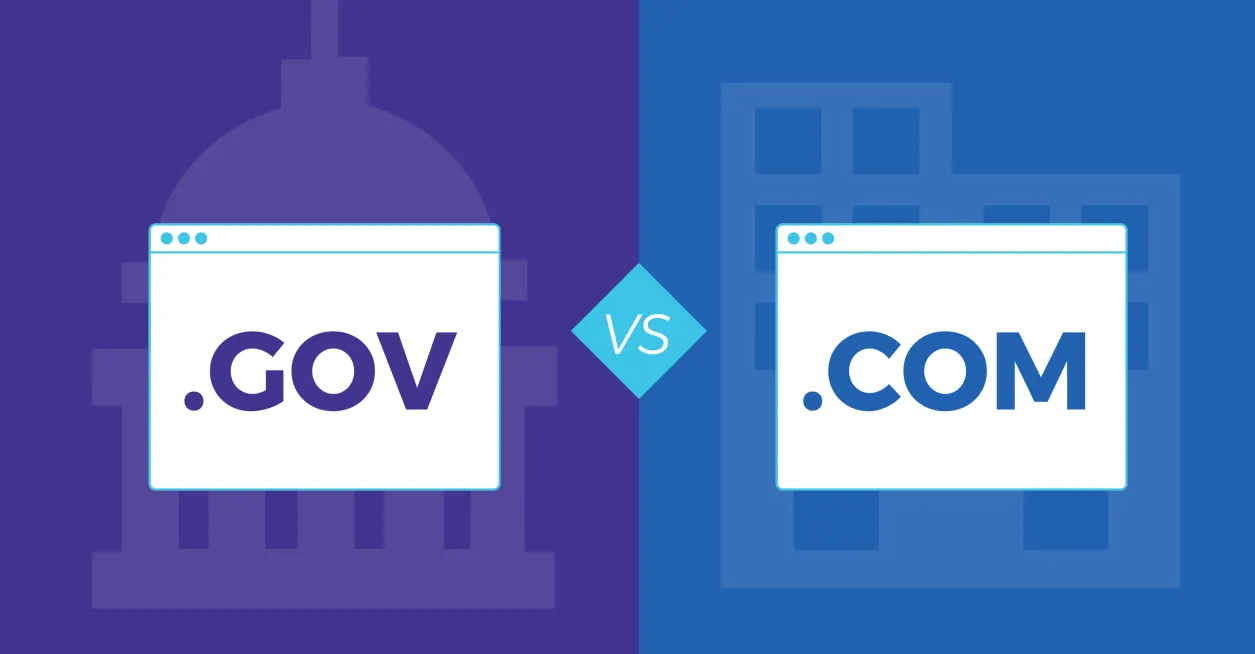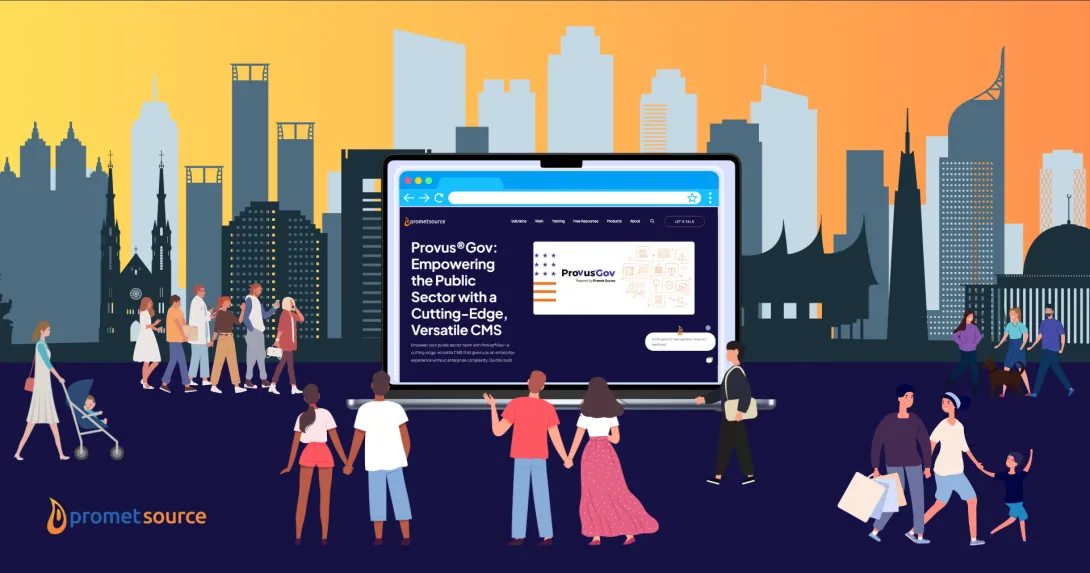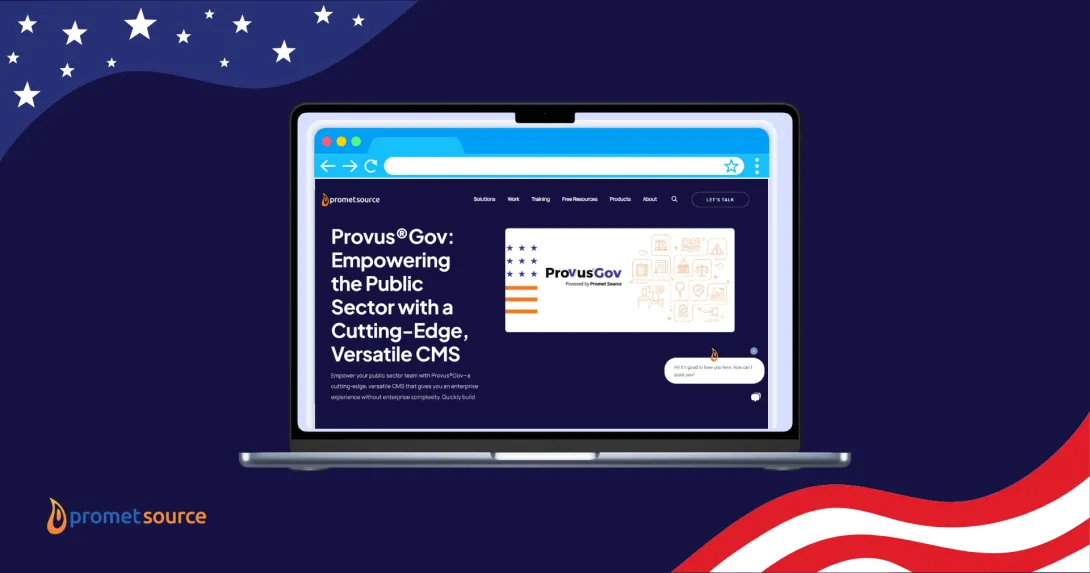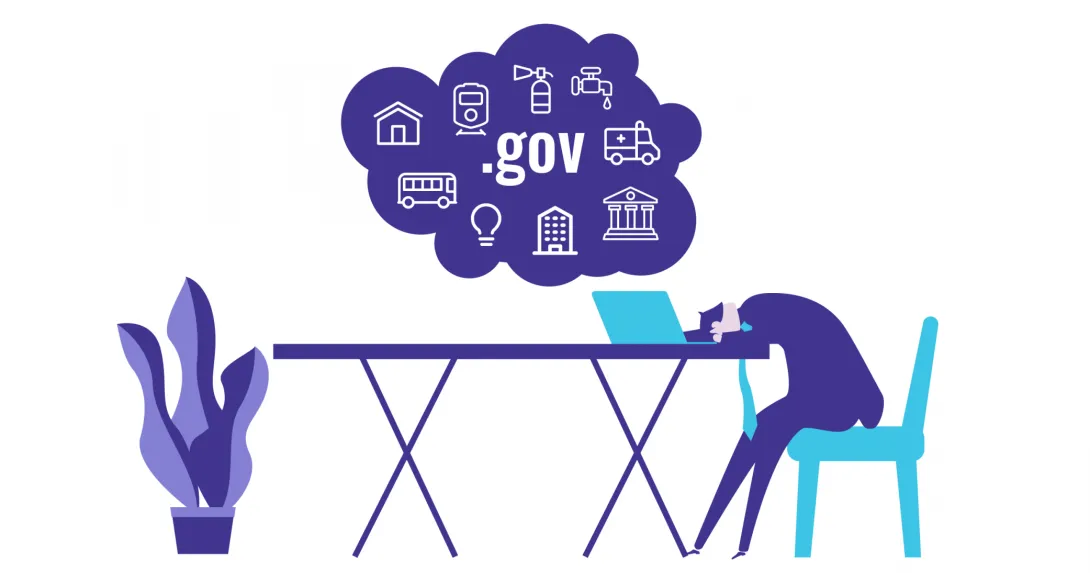5 Reasons Government Websites Require a Purpose-Built CMS

Table of Contents
Takeaway: While all websites share certain fundamentals, local government websites face unique challenges that standard commercial web solutions often fail to address effectively. As digital expectations rise across all sectors, the gap between what citizens need from government websites and what generic platforms can deliver continues to widen.
Local government web managers, IT professionals, and project leaders need to understand these fundamental differences to advocate for specialized solutions that meet their requirements. Below, we explore the five key differentiators that make government websites distinct from their private sector counterparts—and why these differences demand purpose-built, open-source solutions like Provus®Gov.
1. Government websites must serve every demographic group
Private sector approach
Commercial websites typically target specific demographics. An e-commerce site might focus on millennials with disposable income, while a financial services site may target professionals approaching retirement. This targeted approach allows private sector sites to optimize for a relatively narrow range of users.
Government reality
Government websites must serve everyone—from tech-savvy college students to seniors with limited computer experience, from small business owners to residents with disabilities, from long-time citizens to recent immigrants with limited English proficiency. This universal service requirement creates significant design and functionality challenges.
For example, your city website may need to serve seasonal residents, full-time residents, tourists, business owners, and people seeking permits—all with differing technical abilities and needs. Your website's navigation has to work equally well for a senior citizen looking for recreational programs as for a contractor seeking building permits.
Why Generic Solutions Fall Short: Standard website templates and platforms are designed with targeted demographics in mind. They rarely accommodate the extreme breadth of user needs, technical abilities, and accessibility requirements that government sites must address.
What Government Websites Need: Open-source, purpose-built government CMS solutions that incorporate inclusive design principles from the ground up, with robust accessibility features, multilingual capabilities, and user interfaces that work for people across all technical ability levels.

2. Government websites function as virtual town squares
Private sector approach
Commercial websites are usually built around explicit business objectives—selling products, capturing leads, or strengthening brand visibility. Because those goals are well‑defined, their designs can stay streamlined and their conversion paths clear.
Take the HelloFresh website as an example. The hero section leads with a prominent “Get Started” button and an incentive. One click drops the visitor straight into the plan‑selection wizard, and from there it’s only a few steps to the checkout—no competing tasks or secondary journeys to distract you.

We can't expect a local government website to act the same way.
Government reality
Government websites serve as virtual town squares with multiple critical functions: Information hub, service center, emergency alert system, community calendar, document repository, and civic pride platform—all simultaneously. This multi-functional requirement creates complex information architecture challenges.
For example, during the COVID-19 pandemic, city and county websites had to transform overnight to become a central information hub for pandemic updates. The site needed to deliver daily case updates, testing information, vaccine availability, public health orders, and emergency resources—while still maintaining all its regular functions.
Why Generic Solutions Fall Short: Commercial CMS platforms are typically designed around single business objectives with clear conversion funnels. They rarely accommodate the complex, multi-purpose nature of government sites without significant customization.
What Government Websites Need: Flexible, component-based CMS systems specifically designed for the multi-faceted needs of government, with specialized content types for public notices, emergency alerts, service directories, and event management—all within a cohesive user experience.
3. All constituents view themselves as legitimate stakeholders
Private sector approach
In the private sector, companies typically prioritize high-value customer segments, allocating resources strategically towards users who either generate significant revenue or contribute substantial strategic value. This approach involves segmenting customers based on profitability, lifetime value, or market influence, and tailoring experiences accordingly to maximize returns.
Government reality
Every citizen has equal standing as a stakeholder with legitimate expectations for service. A resident seeking building permit information deserves the same quality experience as someone paying taxes or researching voting information.
This universal stakeholder dynamic creates unique pressure on government websites to deliver consistently high-quality experiences across all functions.
For example, a court website needs to serve attorneys, judges, jurors, media representatives, and individuals navigating the court system—all with the same level of service and accessibility. Each stakeholder group expects to find their specific information easily, requiring a carefully balanced information architecture.
Why Generic Solutions Fall Short: Commercial platforms often prioritize features that drive revenue or lead generation, with less attention to service-oriented functions that don't directly impact the bottom line but are essential for government sites.
What Government Websites Need: Government-specific solutions that place equal emphasis on all service areas, with specialized workflows for citizen-focused tasks and robust search functionality that works across diverse content types.
4. Administrative offloading is a primary function
Private sector approach
Private sector websites primarily aim to drive revenue through direct sales, lead generation, or advertising. Their design decisions often focus on funnel optimization—guiding visitors toward profitable actions such as completing purchases, signing up for services, or clicking on advertisements.
Administrative tasks, such as customer support or self-service functionalities, are usually secondary and implemented only when they directly support revenue generation or customer retention goals.
For example, an e-commerce website might prioritize streamlining the checkout process and product recommendations to maximize sales. While administrative tools like order tracking or customer account management may exist, these typically serve to support sales by increasing customer satisfaction and loyalty rather than primarily reducing internal administrative overhead.
Government reality
With perpetually tight budgets, government agencies must maximize operational efficiency. A well-designed website can dramatically reduce administrative costs by enabling self-service for tasks that would otherwise require staff time.
For example, the Orange County, California's website focuses on task completion with their "How Do I" navigation system that organizes content around common tasks rather than department structures. This approach has significantly reduced call volume to county offices by enabling residents to complete tasks online, from applying for building permits to registering for recreational programs.

Why Generic Solutions Fall Short: Commercial platforms rarely include the specialized form builders, workflow automation, and integration capabilities needed to digitize complex government processes that often span multiple departments and require specific compliance features.
What Government Websites Need: Government-specific CMS solutions with sophisticated form handling, document management, and process automation capabilities designed specifically for public sector workflows and compliance requirements.
5. CMS must support rapid updates and flexible editing
Private sector approach
Most commercial websites manage content updates according to pre-established marketing schedules or content calendars. Updates typically involve carefully planned product launches, promotional campaigns, seasonal events, or routine content refreshes.
Marketing or communications teams usually handle these updates through structured workflows, with ample lead time for approvals, quality assurance, and deployment. Emergency or unscheduled updates are relatively infrequent and typically pertain to addressing occasional product recalls, service disruptions, or reputational concerns.
For example, we can expect a brand like Nike to plan content weeks or even months in advance, coordinating website updates with product launches, promotions, or seasonal sales. If urgent updates occur, such as addressing a product issue, these updates still follow established corporate processes involving multiple review stages and oversight by technical and marketing personnel.

Government reality
Government websites must accommodate both planned content and urgent, sometimes emergency-level updates. During crises like severe weather events or public health emergencies, government websites become critical information sources that require immediate, accurate updates—often by non-technical staff under significant pressure.
For example, your website may need to become the central information source for evacuation orders, shelter locations, and emergency services. Content editors must be able to make immediate updates to the site as conditions change, without waiting for IT support or facing technical hurdles.
Why Generic Solutions Fall Short: Many commercial CMS platforms have rigid publishing workflows designed for marketing teams with specialized roles. They rarely account for the urgent, distributed content management needs of government agencies during emergencies.
What Government Websites Need: Government-specific CMS solutions with intuitive interfaces that allow authorized staff across departments to make immediate updates during emergencies, while maintaining appropriate governance and security controls.
Why purpose-built, open-source solutions like Provus®Gov make a difference
The unique challenges of government websites aren't just minor variations that can be addressed with tweaks to commercial platforms. They represent fundamental differences in purpose, audience, and functionality that require specialized solutions.

Provus®Gov was designed specifically to address these government-specific challenges with:
- Universal accessibility built into the core platform, not added as an afterthought
- Component-based architecture that accommodates the multi-functional nature of government sites
- Citizen-centric information architecture that serves all stakeholders equally
- Advanced form building and workflow tools designed specifically for government processes
- Intuitive content management that enables rapid updates during emergencies
- Open-source foundation that eliminates vendor lock-in while maintaining government-specific functionality
Provus®Gov combines the best of both worlds: Purpose-built for government needs while leveraging the security, flexibility, and cost advantages of open-source technology.
This approach is particularly valuable for local governments that need to stretch limited budgets while still delivering exceptional citizen experiences.
Making the case for specialized solutions
For local government web managers, IT directors, and project leaders, advocating for specialized solutions often requires educating stakeholders about these fundamental differences. Use this comparison to help your colleagues understand why your website demands a purpose-built solution like Provus®Gov.
When evaluating specialized platforms for your agency, you can consider:
- How well it meets your RFP requirements
- How it changes your organization
- How much it considers the reality of government websites vs commercial websites
The right solution will not only meet your current needs but also provide a foundation for the evolving digital expectations of the citizens you serve, all while maintaining the flexibility and cost-effectiveness that local governments require.
Ready to see how a purpose-built government website solution can transform your digital presence? Let's talk about how Provus®Gov can address your specific challenges while leveraging the advantages of open-source technology.
Get our newsletter
Get weekly Drupal and AI technology advancement news, pro tips, ideas, insights, and more.





